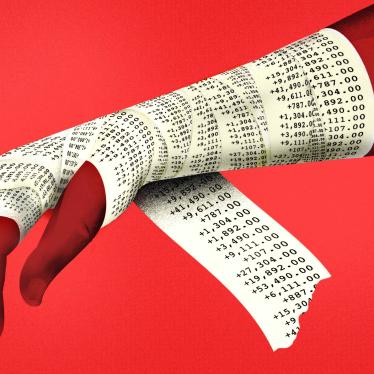New federal statistics reveal that the number of mentally ill inmates in U.S. prisons and jails has quadrupled over the past six years, Human Rights Watch said today. More than half of all prison and state inmates now report mental health problems, including symptoms of major depression, mania and psychotic disorders, according to a just-released federal Bureau of Justice Statistics (BJS) report, Mental Health Problems of Prison and Jail Inmates.
In 1998, the BJS reported there were an estimated 283,000 prison and jail inmates who suffered from mental health problems. That number is now estimated to be 1.25 million. The rate of reported mental health disorders in the state prison population is five times greater (56.2 percent) than in the general adult population (11 percent).
Women prisoners have an even higher rate of mental health problems than men: almost three quarters (73 percent) of all women in state prison have mental health problems, compared to 55 percent of men.
“While the number of mentally ill inmates surges, prisons remain dangerous and damaging places for them,” said Jamie Fellner, director of Human Rights Watch’s U.S. Program and co-author of a 2003 report, “Ill-Equipped: U.S. Prisons and Offenders with Mental Illness.” “Prisons are woefully ill-equipped for their current role as the nation’s primary mental health facilities.”
According to Human Rights Watch, deficient mental health services in prisons and jails leave prisoners under-treated or not treated at all. Across the country, prisoners with mental health problems face a shortage of qualified staff, lack of facilities and prison rules that interfere with treatment.
Prisoners with mental illness find it more difficult to adhere to prison rules and to cope with the stresses of confinement, as evidenced by the new BJS statistics that 58 percent of state prisoners with mental problems have been charged with violating prison rules, compared to 43 percent without mental problems. An estimated 24 percent with a mental health problem have been charged with a physical or verbal assault on prison staff, compared to 14 percent of those without. One in five state prisoners with mental health problems has been injured in a fight in prison, compared to one in 10 of those without.
Prison staff often punish mentally ill offenders for symptoms of their illness, such as being noisy, refusing orders, self mutilating or even attempting suicide. Mentally ill prisoners are thus more likely than others to end up housed in especially harsh conditions, including isolation, that can push them over the edge into acute psychosis.
“Asking prisons to treat people with serious mental illness is pushing round pegs into square holes,” said Fellner. “People who suffer from mental illness need mental health interventions, not punishment for behavior that may be motivated by delusions and hallucinations.”
According to Human Rights Watch, the staggering rate or incarceration of the mentally ill is a consequence of under-funded, disorganized and fragmented community mental health services. Many people with mental illness, particularly those who are poor, homeless, or struggling with substance abuse – cannot get mental health treatment. If they commit a crime, even low-level nonviolent offenses, punitive sentencing laws mandate imprisonment.
The new BJS report reveals that state prisoners with mental health problems were twice as likely to have been homeless and twice as likely to have lived in a foster home, agency or institution while growing up as those without mental health problems. Prisoners with mental health problems were also significantly more likely to have reported being physically or sexually abused in the past, to have had family members who had substance abuse problems, and to have a family member who had been incarcerated in the past. An estimated 42 percent of state inmates had both a mental health problem and substance dependence or abuse.







